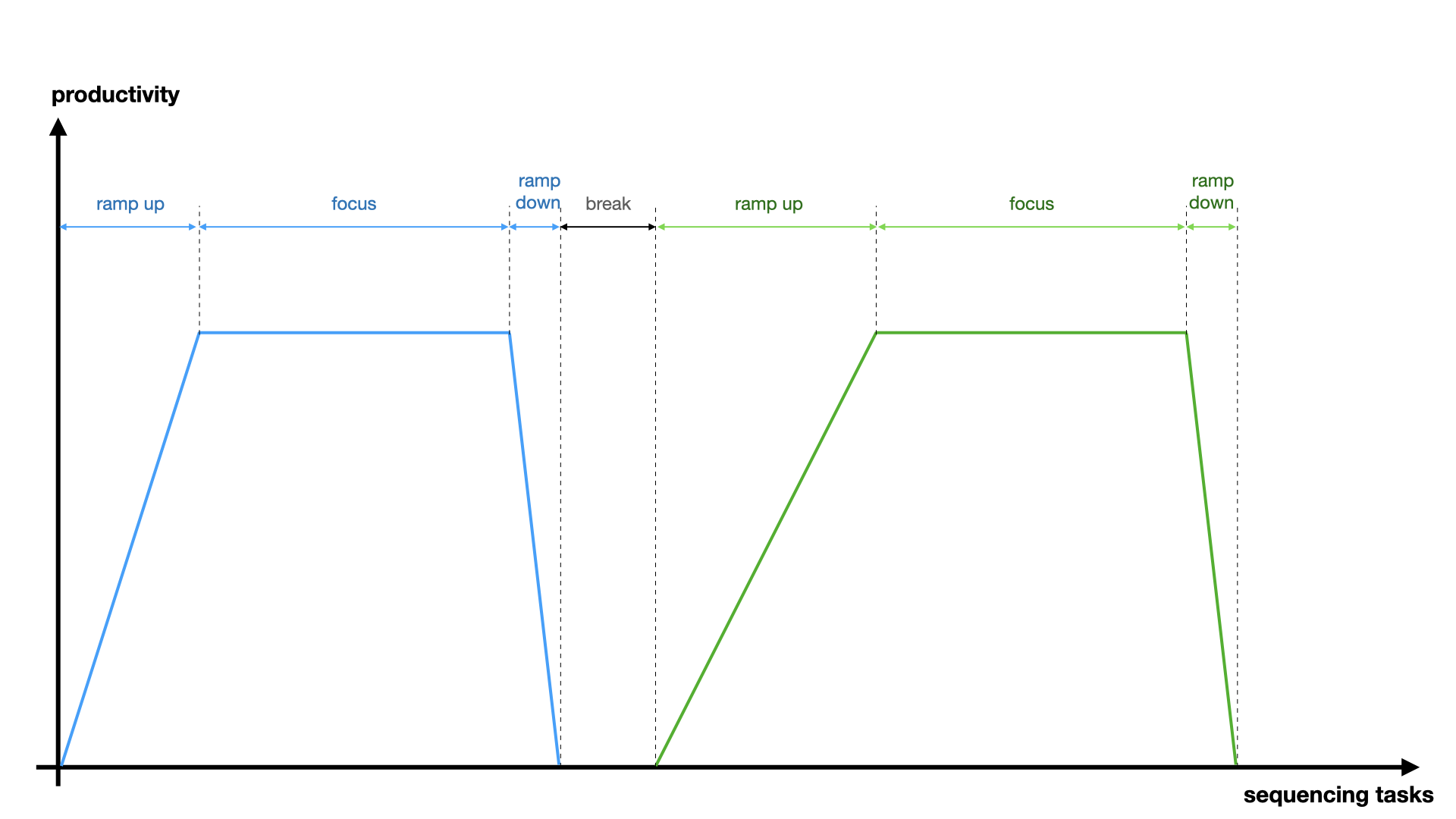“MULTITASKING”
Multitasking is one of the predominant productivity myths. Some believe multitasking enables them to do more. They believe that by being great multitaskers, they can accomplish more than their peers or what their role requires of them. I’ve found the opposite. “Multitasking” is one of the great efficiency lies and thieves.
Multitasking should really be called Switch Tasking. Switch Tasking is your brain alternating between tasks, dedicating energy to ramp on, focus, and ramp off of tasks. For simple and familiar tasks, this is naturally in the background and causes minimal inefficiencies. For more New, Unique, Different, or Difficult (NUDD) tasks, switching between tasks causes large losses in efficiency and capability.
Let’s take two rather simple tasks, the alphabet and numbers. On a piece of paper, time yourself doing the following two tasks:
Write out the alphabet from A to Z and then write the numbers 1 to 26 [duration1]
A, B, C, …, X, Y, Z, 1, 2, 3, …, 24, 25, 26
Write out the same alphabet and numbers, but alternating between the two tasks [duration2]
A, 1, B, 2, C, 3, …, X, 24, Y, 25, Z, 26
I’ve yet to meet a person where duration2 was shorter than duration1. Both alphabet and numeric tasks are rather simple but the order in which we accomplish the task matters. This is the switch tasking inefficiency. The amount of time that is lost depends on the individual's competency of the tasks, interferences such as breaks or meetings, and ramping up/down periods. This can be visualized as so:
If we were to compare this generic productivity function over different types of tasks, we would observe that switch tasking highly complex tasks causes enormous inefficiency. This is contributed by the ramping up/down period required for our brain to switch between tasks. The graphic below shows time to accomplish the same two tasks dependent on sequencing, switching, and an individual’s competency of the tasks.
I ran this across a diverse group of individuals and, to no surprise, duration2 was 79% longer than duration1!
Switching between tasks is inefficient. So when people look at being efficient, one of the best ways to accomplish this is by structuring intentional uninterrupted time in your day to complete tasks. There are many ways to accomplish this while balancing business and role needs.
Reflect on your time management and try to qualitatively gauge how much impact is lost trying to “multitask”. Do you want to improve?
If you’d like to know my approach to time management, sign up for personalized coaching!



